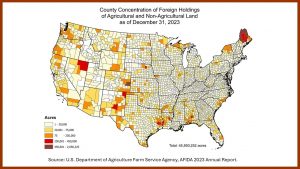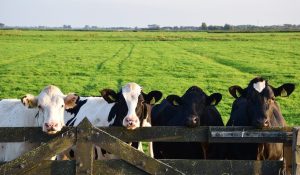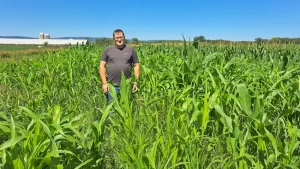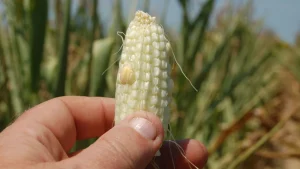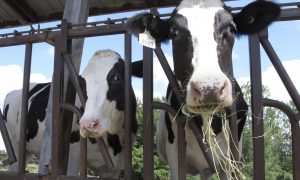
And as the dire drought continues to grip producers, some fear it could spur dairy farmers to leave California and relocate farther east.
Today, nearly 80% of the U.S. is covered in drought and dry conditions, and it’s farmers in the western U.S. who have seen multiple years of drought. But even with the constraints, the U.S. is still seeing dairy production growth this year.
“We think the dairy herd is likely to stabilize in 2023,” says Roland Fumasi, who is the head of RaboResearch Food & Agribusiness for North America. “We saw the dairy herd grow by about 40,000 head in 2022. But given a lot fewer replacement heifers this year, we think there’s not going to be significant growth in the dairy herd numbers. However, we do expect dairy production in the U.S. in 2023, to be up about 1.4% on a milk solids basis.”

The number of milk cows on farms in the 24 major states is 8.93 million head, according to USDA’s latest Milk Production report. That’s 42,000 head more than October 2021, and 1,000 head more than September 2022.
RaboResearch started exploring g the idea of dairy cows migrating toward the center of the country a couple years ago. The Reason? Water issues in the West, as well as a way to be closer to an abundance of feed. And Rabo says today, that scenario is already playing out.
“We put out a paper a couple years ago around this idea that the dairy cows are migrating toward the center of the country, closer to the feed. That’s where the dairy processing capacity expansion is primarily happening. And that’s where the cows are heading. And really, it’s being driven partially by all the water challenges that we see in the West,” he adds.
Fumasi says he doesn’t see a mass exodus of dairy farmers out of California, but he does see the dynamics of dairy shifting in the years ahead.
“I think we’ll continue to see consolidation in the dairy industry in California, the smaller herds are going to really have a tough time of it like they have for the last 10 or 15 years. I still think we’ll see some producers migrate out, but it’ll continue, I think to be a trickle. I’m not sure that it’s going to accelerate significantly,” he adds.
Consolidation in California
Not everyone thinks California will lose a significant amount of dairy cows. Mike North of ever.ag says dairy farmers who are in a water deficit area may be forced to relocate, but he says there will always be dairy cows in California. However, consolidation is something he thinks will continue to happen in the state, largely due to the drought.
“What’s happening is the people that are water threatened may be looking to reduce their herd, but producers who aren’t water threatened are buying their cattle and quotas. So, you won’t see the number of dairy cattle in California dramatically drop,” says North.
By the Numbers
The latest data from USDA reflects that forecast. According to USDA’s November Milk Production report, California was home to 1.723 million dairy cows, which was up from the 1.719 reported a year earlier. However, overall milk production dropped. California milk production dropped to 3.429 billion pounds in 2022, which was down from the 3.447 billion pounds produced in the state only a year prior.
Even with the drop in production, USDA’s November report confirms California is holding on to the top spot in terms of number of dairy cows, as well as milk production. North thinks California will continue to be a powerhouse in dairy production, even if the dynamics do slightly shift east.
“California has the second largest population in the country,” adds North. “You need to have milk close to the population, and because there’s already infrastructure there, there will always be dairy in California.”
Opportunity for Beef on Dairy
The drought has also caused a major reduction in the beef herd. Fumasi says he thinks that continues over the next two to three years with the beef supply chain looking for cattle. And the need for more beef cattle could be answered by dairies.
“We’ve seen a major reduction in the beef cow herd, and as that’s continuing the over the next two to three years, the beef supply chain is going to be looking for cattle,” Fumasi says. “We’re going to be short. So, these crossbreeding programs that have become much more popular in the dairy industry, they’re going to be critical and that is absolutely going to be a bright spot for the dairy industry. cattle prices are going to be high. The beef industry is going to be looking for cattle. The dairy industry can help them out.”




